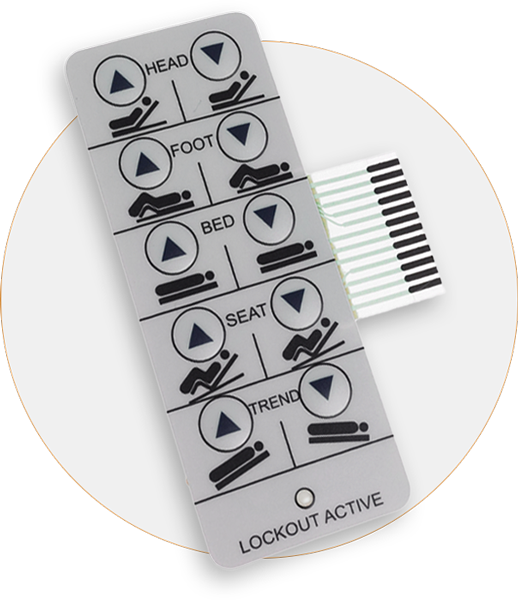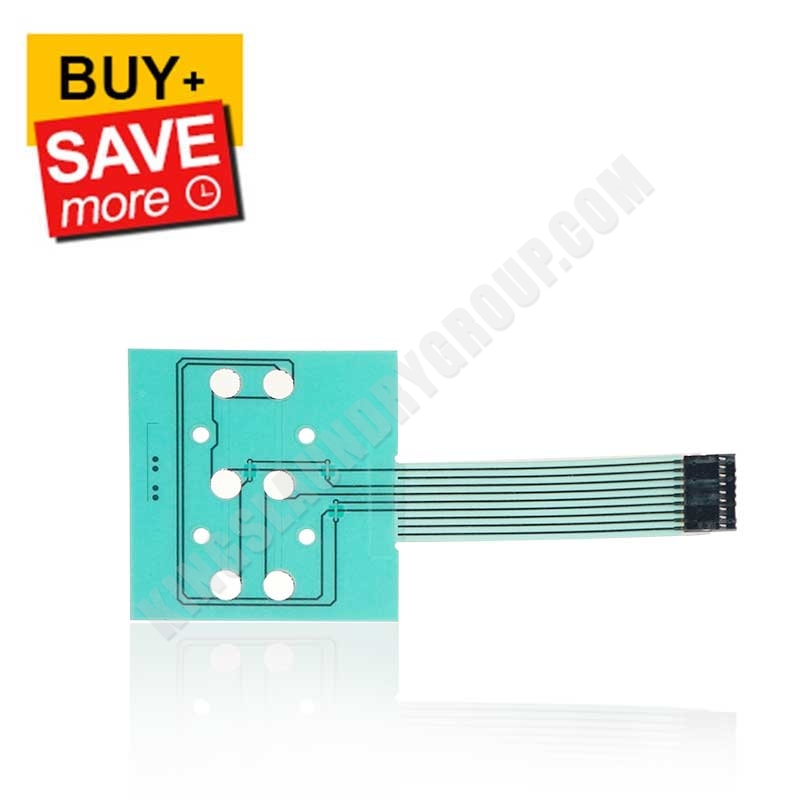Discover Just How Membrane Switches Improve Functionality and Item Efficiency
Membrane Changes Explained: A Comprehensive Overview to Their Benefits
Membrane layer changes represent a advanced and versatile service for producing user interfaces throughout a range of sectors. As industries increasingly look for efficient and reliable control user interfaces, recognizing the details benefits and applications of membrane switches comes to be vital.
What Are Membrane Buttons?

When stress is related to the membrane layer switch, the layers make get in touch with, finishing an electrical circuit. This easy mechanism enables for a wide variety of applications, from consumer electronics to commercial machinery. Membrane buttons are often designed to be immune and waterproof to dust and pollutants, making them ideal for settings where longevity is necessary.
Furthermore, the adaptability of the materials used in membrane layer switches promotes ingenious styles that can adapt various shapes and measurements. This adaptability contributes to their appeal in varied fields, consisting of clinical gadgets, automotive controls, and home devices. Generally, membrane switches over stand for an essential aspect in modern customer interface technology, linking the space in between users and electronic systems.
Trick Advantages of Membrane Layer Buttons
Among the myriad of interface options readily available, membrane changes stand out for their distinct mix of benefits. Among the primary advantages is their light-weight and small layout, which permits for integration into a vast array of tools without including considerable mass. This is specifically useful in applications where space is limited.
Furthermore, membrane layer switches over offer durability and resistance to ecological aspects. They are usually created with materials that can withstand moisture, dirt, and numerous chemicals, making them ideal for harsh problems. This resilience adds to a much longer lifespan contrasted to traditional mechanical switches.
An additional significant advantage is the adaptability in customization. Membrane buttons can be published with numerous graphics, colors, and appearances, enabling tailored designs that satisfy specific branding or useful needs. This flexibility expands to the number of layers and circuit options, providing engineers with several configurations.
Furthermore, the tactile comments given by some membrane switches over boosts individual experience, making them a lot more intuitive to operate. The simplicity of cleaning and maintenance additionally solidifies membrane layer switches as a functional selection in both consumer and industrial applications. In general, these key advantages make them a favored option for lots of designers and suppliers
Applications in Numerous Industries
Just how do membrane switches locate their location across varied industries? Their adaptability and performance make them indispensable elements in fields ranging from health care to customer electronics. In medical tools, membrane buttons are made use of for their ease of cleaning and resistance to contamination, making certain hygiene in environments where sterility is vital.
In the customer electronics market, these switches offer streamlined, straightforward interfaces that boost product visual appeals while preserving longevity versus deterioration. Automotive applications benefit from membrane layer switches too, where they are utilized in control panels and control panels, offering trusted efficiency in challenging problems.
Furthermore, industrial equipment uses membrane layer buttons for control board as a result of their robustness, capability to endure rough atmospheres, and personalized layouts that accommodate certain functional needs. The food industry leverages membrane switches for their convenience of use and resistance to spills, making sure functional efficiency in fast-paced settings.
Ultimately, the adaptability of membrane layer switches across these varied applications emphasizes their important role site in modern-day technology, enhancing individual interaction while satisfying industry-specific requirements. Their continued evolution promises further integration into emerging areas and cutting-edge items.
Layout and Modification Alternatives
The layout and customization options offered for membrane switches are essential for tailoring user interfaces to satisfy details user demands and visual preferences. These switches can be home made in different forms, dimensions, and layouts, enabling seamless assimilation into varied applications. The versatility in design suggests that producers can develop unique user interfaces that enhance functionality and maintain brand identification.
Custom graphics, structures, and shades can be applied to the surface of the membrane layer switch, supplying an opportunity for branding and individual interaction. In addition, backlighting options, such as LED lighting, can be included to boost visibility in low-light conditions, therefore boosting functionality.
Functional elements can likewise be customized, including responsive responses and actuation force, which can be adapted to fit various customer communications. The selection of products, such as polyester or polycarbonate, allows for variations in longevity and ecological resistance, dealing with the certain needs of different markets.
Ultimately, the comprehensive style and personalization abilities of membrane layer buttons make it possible for firms to produce visually enticing and easy to use interfaces, guaranteeing that their products meet both practical and visual requirements effectively. Membrane Switches.
Considerations for Execution
Applying membrane layer switches over requires cautious factor to consider of numerous factors to guarantee optimum functionality and user experience. Elements such as exposure to wetness, extreme temperature levels, and chemical materials can dramatically influence the button's efficiency and longevity.

Another important aspect is the button's layout and format. Making certain that the responsive responses and actuation force line up with user expectations boosts use. Carrying out individual testing can provide valuable understandings right into the ideal style.
Furthermore, compatibility with electronic parts have to be assessed. The button's wiring ought to align with the total system design, this website making sure reputable signal transmission and reducing disturbance.
Additionally, production methods and prices ought to be evaluated. The option between custom layouts and conventional models can lead and affect both budget plan time.
Lastly, take into consideration repair and maintenance. Membrane layer switches may call for specific cleansing and treatment treatments to preserve their appearance and performance over time. By resolving these factors to consider, companies can implement membrane buttons that fulfill their functional needs while providing a favorable customer experience.

Verdict
In conclusion, membrane layer changes represent a resilient and versatile control user interface appropriate for a large variety of applications across numerous markets. Membrane Switches. As technology proceeds to progress, the relevance of membrane layer switches in modern-day gadgets remains substantial, using both functionality and visual appeal.
Membrane layer changes stand for a advanced and versatile remedy for developing individual interfaces throughout a variety of fields.Understanding the essential components of modern-day electronic interfaces, membrane buttons are a type of individual interface gadget that are composed of versatile, slim layers of material. Generally, membrane switches over stand for a crucial aspect in modern-day user interface technology, connecting the void between users and electronic systems.
Amongst the myriad of individual interface alternatives readily available, membrane changes stand out for their special combination of advantages.The layout and customization options offered for membrane layer buttons are critical for customizing interfaces to satisfy certain customer requirements and visual choices.